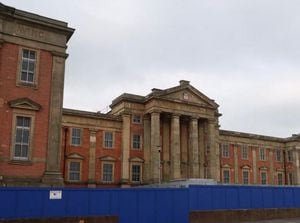Ten additional flats for historic former Wolverhampton hospital development
Plans for an additional ten flats to be included in the former Wolverhampton Royal Hospital residential development have been granted listed building consent.

The application, made by Walsall Housing Group Ltd (whg), will see the flats added to the lower ground floor of the existing grade II listed building, currently being converted into 38 one and two-bedroom apartments.
Built between 1846 and 1849, the historic hospital premises in Cleveland Road closed in 1997 and will be used to house over-55s once the redevelopment is complete. The whole of the four-acre site is located within the Ettingshall ward and the Cleveland Road Conservation Area.
The former porters’ lodge in the hospital grounds, which was built in 1863, is set to be converted into a shop and cafe/restaurant. The whole conversion project is due to be completed by autumn/winter 2024.
In a statement submitted alongside the application for the additional flats, Birmingham-based BPN Architects – acting on behalf of the applicants – said: “In December 2019 Jessup’s were awarded the contract for the development of the site, partnering with Walsall Housing Group (whg) to deliver the scheme.
“Following the start of work, end user whg has decided to seek permission for an additional ten flats within the basement. In addition to the Cleveland Road Conservation Area itself, there are two other conservation areas in close proximity – St John’s Square and Old Hall Street.
“The former hospital is an important historic building in its own right, an important local landmark and arguably the most significant surviving building within that conservation area. Since it closed, the main building has been subject to various proposals which have sought to adapt it for new uses, but none has ever come to fruition.
“This application seeks to return it to full and sustainable use which will not only protect the principal heritage asset within the site, but will also help to transform and enhance the surrounding area.
“Unsightly stretches of vacant land nearby will be also be replaced by new residential developments. The loss of the former nurses’ home at the site will be mitigated through the design of the replacement building, which which will respect the settings of the adjacent designated heritage assets,” added the statement.
Senior planning officer Phillip Walker said: “Prior to work on this development beginning, a method for removing the existing memorial stone will be submitted to and approved in writing by the local planning authority. The stone will be relocated elsewhere on the site.”





